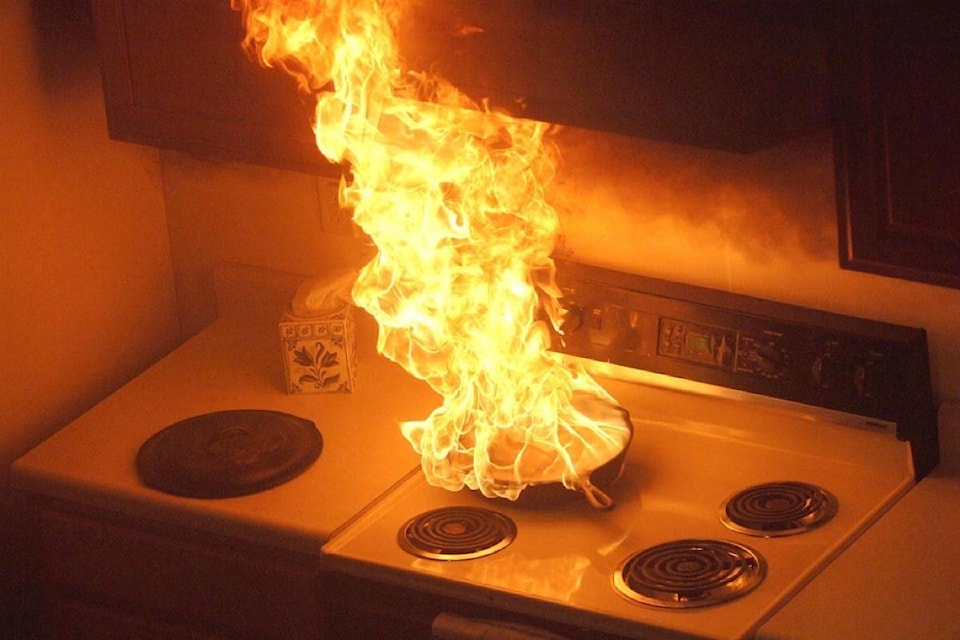With Christmas Day almost here, people’s mouths may be watering at the thought of roast turkey, fresh-baked pies, creamy mashed potatoes, and other traditional favourites. The season comes with a variety of delicious foods; but it’s also too often marred by tragedy in the form of kitchen fires.
More fires begin in the kitchen than any other room in the home. In fact, residential cooking is the leading cause of home fires in Canada, and one of the leading causes of fire-related deaths. The majority of kitchen fires begin with cooking equipment, and number one on the list of fire sources are stoves, including microwave ovens. The holiday season tends to bring with it a significant increase in the amount of baking, cooking, and general oven use that occurs
Never leave food unattended on the stove. It doesn’t matter if it’s just for a minute, or for a quick phone call, or for a knock on the door, or even being caught up with children. Cooking requires your full attention, because a fire can be sparked very quickly and can spread even faster. Be proactive and watch your food, so that in the event of an unexpected fire, you’re able to act quickly and decisively before it escalates.
Keep pot handles turned toward the back of the stove: a small child could pull on a handle extending out at the front of a stove and be burned or scalded by the pot’s contents. And don’t store frequently used items above the stove; you may be burned while reaching over a hot stove to get them.
Avoid wearing loose clothing while cooking: loose clothing can brush heating elements and easily catch fire. If your clothing catches fire, stop where you are, drop to the ground, and roll back and forth to put the fire out. Immediately cool a burn with cool running water under a tap for five to ten minutes and then seek medical attention.
Keep your stove and oven clean, as built-up grease and food particles are easily ignited. Keep combustibles (i.e. curtains, dish towels, plastic or wood utensils, newspapers, grocery bags) away from the stove, oven, and all appliances. Unplug kettles, frying pans, and other appliances when not in use.
Examine the stove and oven, toasters, coffee makers, and other cooking devices for signs of cracking, fraying, or wear on cords and plugs, and be aware of overheating. Avoid plugging too many appliances into the same electrical outlet.
In the event of a fire in your oven or microwave, close the door and turn the appliance off. The lack of oxygen will eventually smother the flames and prevent them from growing. Similarly, if your fire happens in a pan, use an oven mitt to clap on the lid, then remove the pan from the heat source. The fire should fizzle out due to lack of oxygen.
If you don’t have a lid for the pan, or are unable to put it on safely, use a fire extinguisher and aim it at the base of the fire. However, you should only use a fire extinguisher if you know how to operate it safely and correctly. Never touch or attempt to carry a flaming pot; the contents may spill, spread, or burn you.
Grease fires can be especially treacherous. Never use water to try to put one out, as the grease will get repelled and there is a risk of spreading the fire further. Instead, use baking soda or salt (never flour), and use a large wet cloth to smother the fire.
Never swat at or blow on a fire. Kitchen fires don’t necessarily behave like birthday candles: the air movement is far more likely to spread the fire than it is to put it out.
If at any time you feel endangered or unable to control the fire, call the fire department and evacuate the house. Make sure you and your family have a safe fire escape route planned, that everyone knows what it is, and that you have a designated gathering spot where everyone knows to go to in an emergency.
